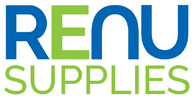How To Get The Most Out of Surface Disinfectants!
Disinfecting always seemed like an easy task: spray it on, wipe it down, done!
While it sounds like an easy task, we have to remember that disinfectants are actually considered pesticides and when they're used incorrectly, they can be both ineffective and harmful overall. All manufacturers are required to note on their labels that "it is in violation of Federal law to use this product in a manner inconsistent with its labeling."
While this may sound scary, the proper handling techniques are actually very simple. So, let's talk about that!
- One thing a lot of end users don't realize is that there are actually recommended dwell times for different disinfectants, which means spraying and wiping immediately all of those years may have done more harm than good. Most contact times, dwell times, wet times, will range anywhere from 30 seconds to ten minutes depending on the solution. If the end user does not correctly allow for the appropriate amount of contact time as noted on the label, the disinfectant will be ineffective. Contact times can also vary depending on the ingredients and the specific microbe being targeted with that disinfectant.
NOTE: If unsure of a product's contact time, it is always the best practice to let the surface remain wet for ten minutes. - Choosing the right disinfectant with kill claims relevant to your usage is also an important factor when deciding how to disinfect your surfaces. Manufacturers cannot make a claim against an organism without first going through the proper testing and then receiving EPA approval of that data for that specific disinfectant.
- Disinfecting high touch surfaces is definitely a given, but we also need to be conscious of the surfaces to which we are actually applying the product. If the surface we are disinfecting is intended to be used for food preparation or prolonged contact, it's recommended to rinse the disinfectant once the contact/dwell time has been reached. Failure to do so can result in human/animal inhalation, absorption, or ingestion exposure. If your surfaced to be cleaned is intended to be used for food-service, we recommend using a disinfectant or sanitizer rated and tested for food service like Spartan Sani-Tyze.
- A lot of commercial and healthcare specific disinfectants with higher concentration will require a proper dilution to be used correctly. Adding more disinfectant concentrate into your dilution will not "increase" the microbe killing effect, but it will most likely result in a sticky substance that will need to be properly cleaned and removed at a later time.
- Prepping your intended surface / area to be free of any dirt of obstacles is recommended to properly disinfect. Disinfectants work best by attacking the microbe at full force to completely penetrate cell walls, thus allowing them to filter their way through to kill the microorganism. Any sort of soil, dirt, or surface conflict will limit the efficiency of the disinfectant so be sure to use preparation supplies like micro-fiber cleaning clothes and other PPE supplies to effectively prep your area!
Newer high-efficiency application methods are popping up more and more these days. These include the use of equipment such as Foggers, Sprayers, and Misters! These applicators are being recommended more and more for their ability to tackle high use and large surface areas (e.g. schools, hospitals, offices, etc) while also decreasing the overall cost for the end user due to large labor savings.
Note: We recently launched the video above on our YouTube channel here that discusses the Titan Sprayer Mister more in depth, so be sure to give that a quick view to learn more!
One thing to keep in mind as these spraying applicators continually grow is that each manufacturer (and even each individual sprayer) recommends the use of specific disinfectants and sanitizing solutions to work effectively with that piece of equipment. As mentioned previously, the improper handling and application of disinfectants and surface sanitizers can pose a potential health hazard, but the overall cost of misuse can add up over time as well.
Here is an example of the overall Cost Savings from one of our customers since having switched to an electrostatic spraying system:
- On average, a two man custodial team requires 2 hours per day for each office being cleaned. This office building contains 20 individual offices, and each office is cleaned 3 times a week, every week, for 9 months out of the year. The total man hours required for this per year is 216 hours per office, totaling $2,592 at a $12/hour rate per custodian.
- By switching to an electrostatic spraying system, this customer was able to decrease their total spend of $51,840 per year by reducing the 2 man team into one spraying system.
Remember, only use disinfectants when necessary, and remember to follow the manufacturer label for proper application, dilution instructions, contact times, and all other pertinent information needed for safe handling. Please continue to practice common sense when using disinfectants and sanitizers.
If you have any questions at all, the expertise of the RENU CREW is at your disposal. Shoot me an email at kyle@renusupplies.com.
Recent Posts
-
Keeping Your Floor Sweeper in Top Shape
We know just how important it is to keep your workspace or living environment spick and span, and a …Sep 1st 2023 -
Maintaining Your Cleaning Chemical Sprayer: Tips for Optimal Performance and Longevity
Cleaning chemical sprayers are essential tools for maintaining cleanliness and hygiene in various s …Jun 2nd 2023 -
Types of Floor Pads
Floor pads are an essential component of floor maintenance in any facility. They come in several d …Apr 7th 2023

